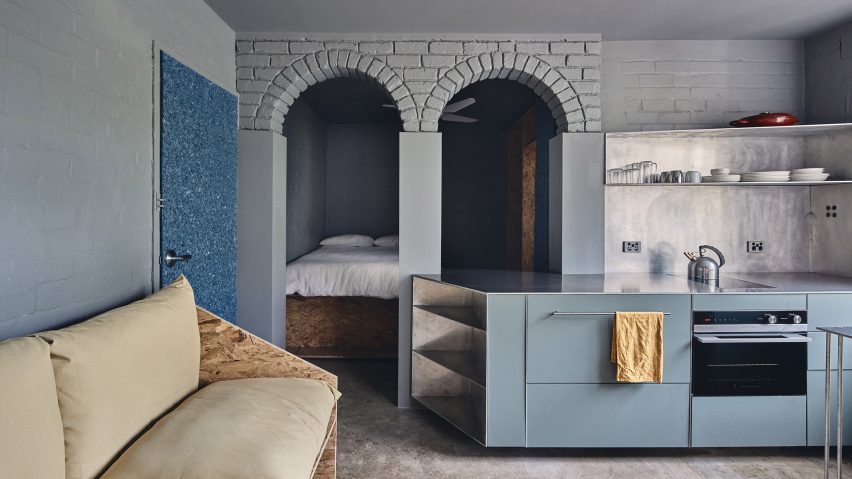
Chipboard and recycled denim define spaces inside Microloft in Melbourne
Australian architecture practice Studio Edwards has completed an exercise in contemporary small-space living with this 24-square-metre micro apartment in Melbourne's Fitzroy district.
The clients, a young couple, approached Studio Edwards to remodel the tiny studio apartment on the top floor of a 1980s apartment block.
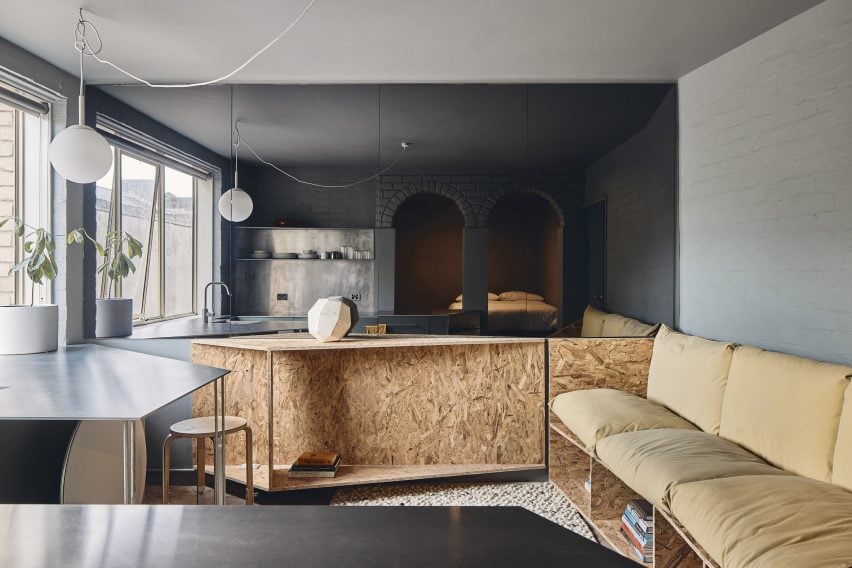
"They asked for a home that felt unified and clutter-free, with ample storage, an efficient kitchen with space for cooking and dining, a comfortable lounge and quiet sleeping zones," founder Ben Edwards told Dezeen.
"Microloft provides a solution for inner-city living that navigates the constraints of limited space and ageing housing stock through an interior that provides the clients with a functional and coherent dwelling."
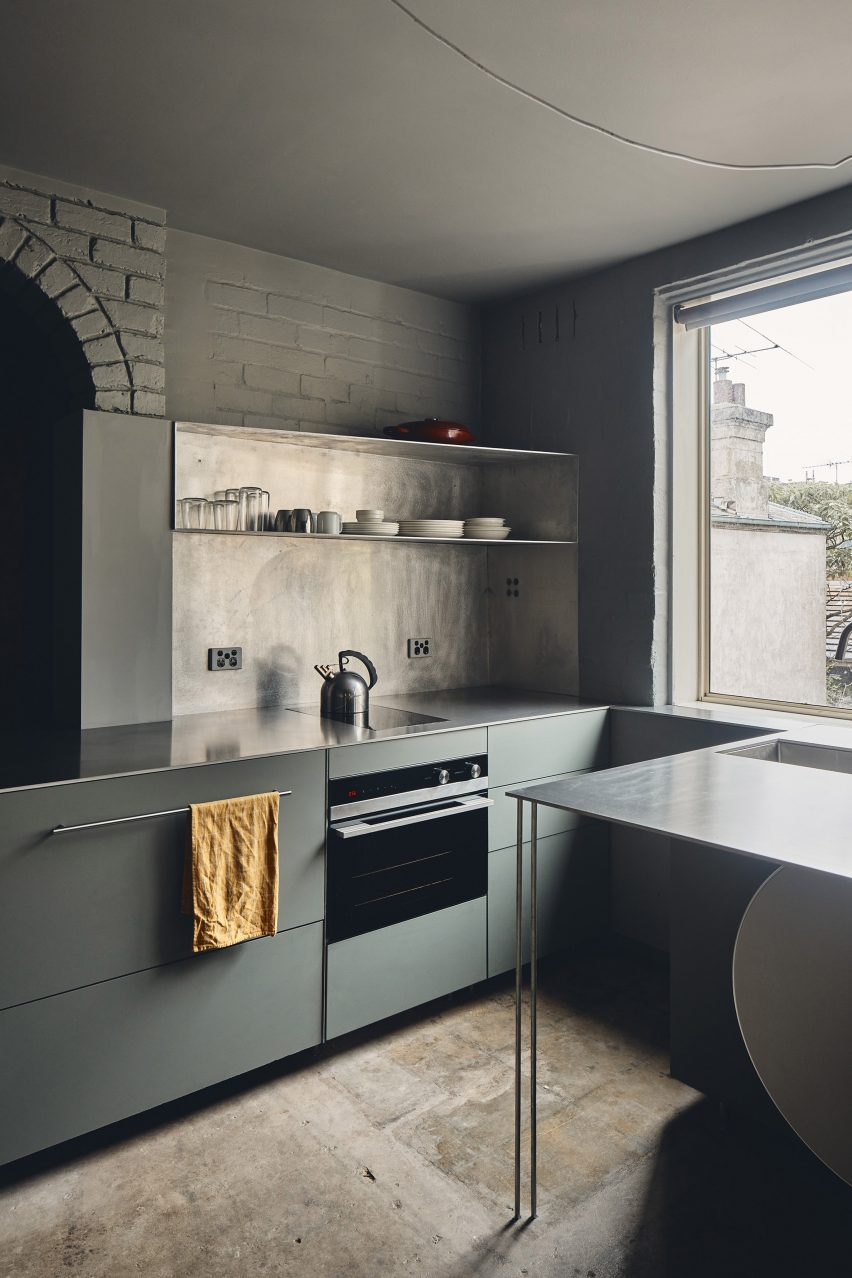
Rather than using partitions or walls, spaces are defined by custom furniture pieces that provide visual connections.
A horizontal raw aluminium surface forms angled countertops in both the kitchen and dining area before extending through an existing double archway into the sleeping area beyond.
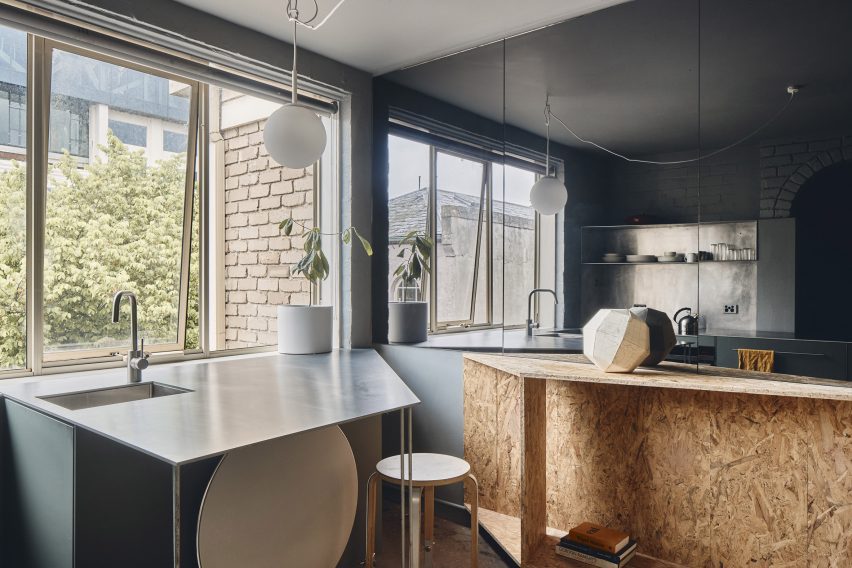
"Angled elements act in a similar way to room dividers, nothing extends higher than the datum line, helping the space to remain open," said Edwards.
"The kitchen melds seamlessly into a dining space via the angled countertop, while triangular storage shelves make use of the corners of the room."
The angular wedge shape of the aluminium counters is mirrored in a wall-mounted console and a custom-made sofa with bookshelves integrated into its base, both made from oriented strand board (OSB).
Above the datum line, one wall is clad in grey mirrored panels to make the apartment appear larger while creating a visual link to the grey-painted exposed brick walls and the heavily patinated concrete floor.
The bed sits on a raised chipboard plinth to maximise bedroom storage, while the sliding door of the wardrobe, as well as the apartment's front door, are wrapped in recycled denim to provide further textural interest as well as acoustic softening.
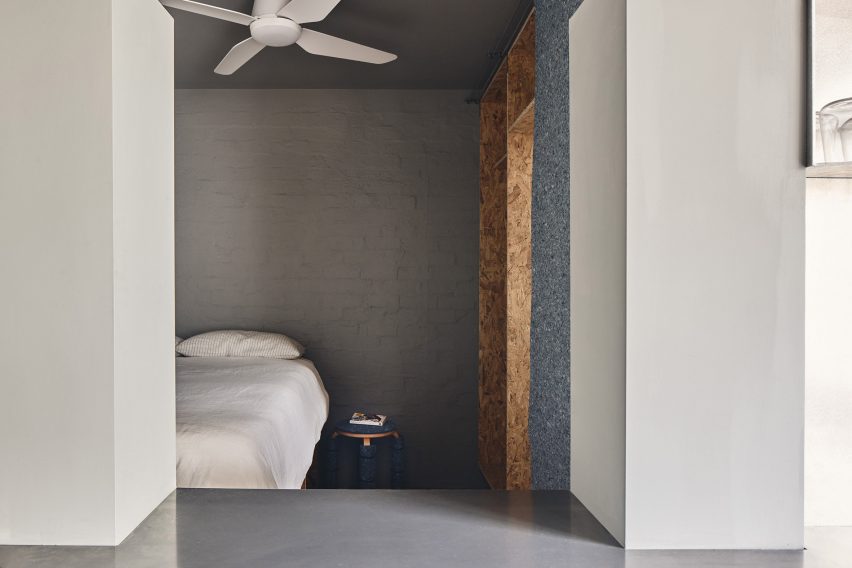
"Use of raw aluminium surfaces, along with the OSB plinth that elevates the bed, provide creative storage solutions while delivering refined aesthetic appeal," said Edwards.
Simple IKEA stools were customised to fit in with the apartment, with a bedside stool wrapped in recycled denim to further soften the acoustics in this space.
In the dining area, the same stools were extended with aluminium legs to create high seats for bench-top dining.
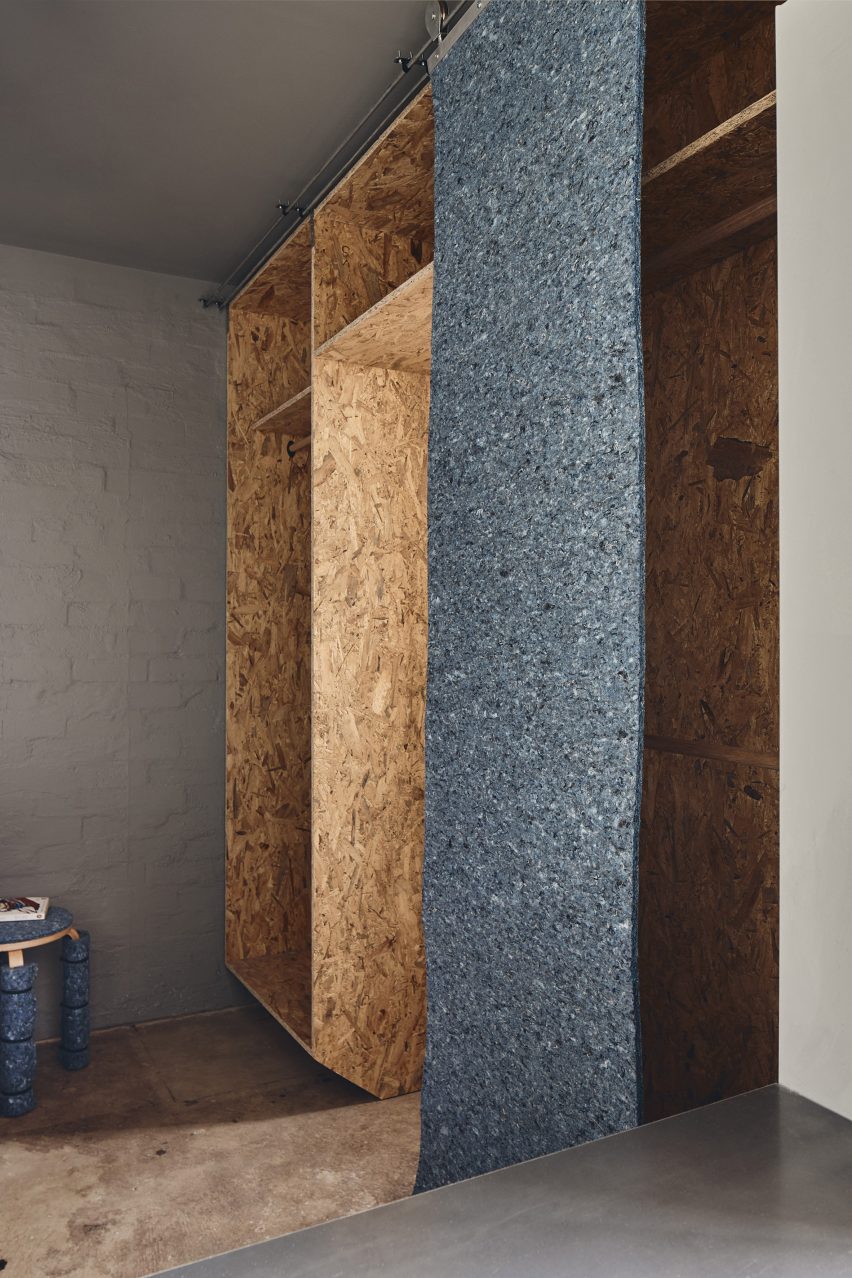
Micro homes are among a number of solutions being explored by architects and interior designers in response to Melbourne's worsening housing crisis, as the city saw record rent increases last year.
Others have explored creating multi-generational homes where family members can split both spaces and costs, as seen in this house on a narrow infill site by Matt Gibson and this adaptable suburban home by Austin Maynard Architects.
Maynard also recently self-funded the construction of an "ethical housing" block in inner-city Melbourne, accommodating 20 low-cost, eco-conscious apartments with enough room for young families.
The photography is by Peter Bennetts.